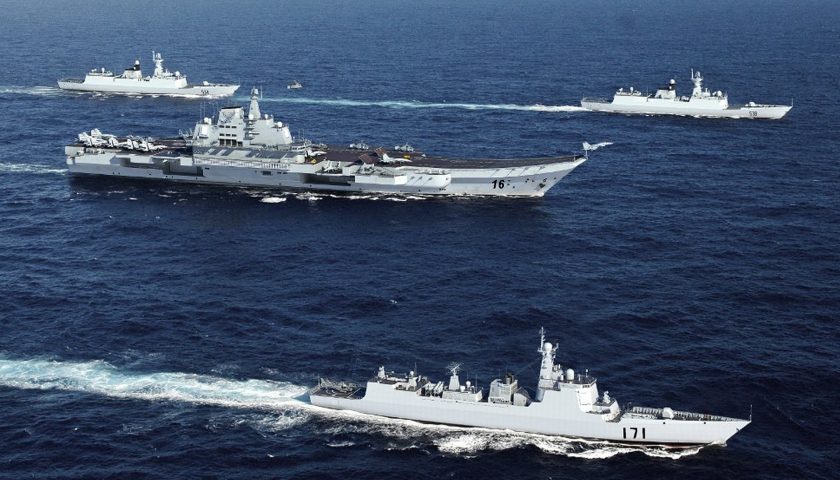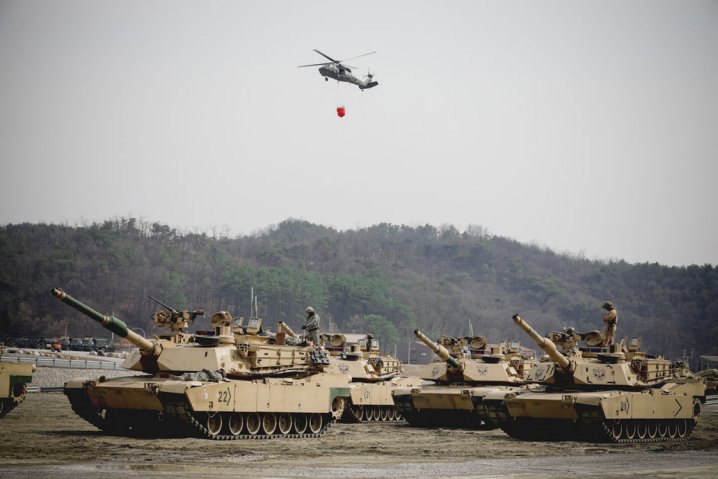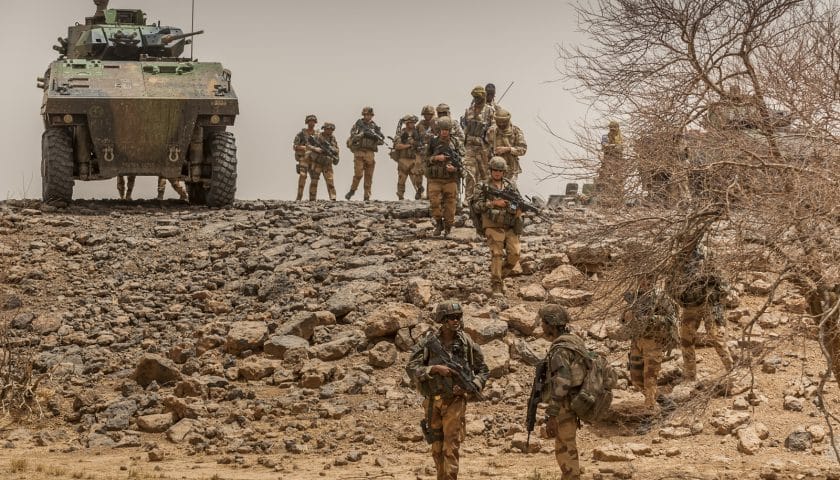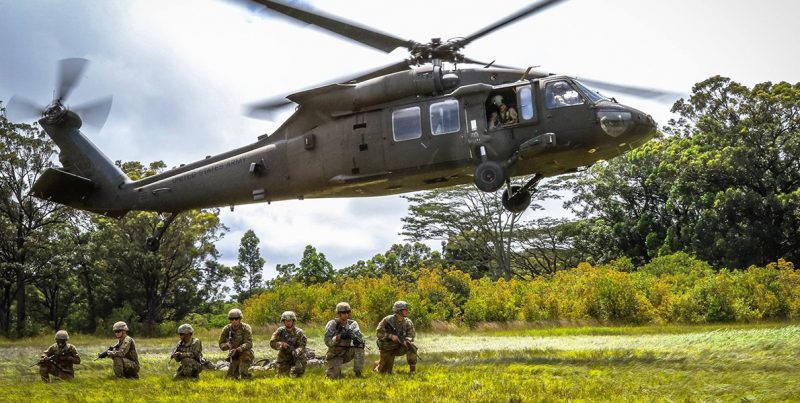“Chinese gentlemen, shoot first!” ". It is with this paraphrased statement from the famous reply of the Count of Anterroches during the battle of Fontenoy in 1745, that we can summarize the new strategy presented by the Chief of Staff of the US Army, General James McConville, to face Chinese forces in the Pacific. But where the phrase of the French officer reported by Voltaire was only bravado in the face of the superiority of the British forces certain of victory, for the American general officer, it is a question of defining a new doctrine of use of forces in order to preserve the means and firepower of the US Army in the Pacific, even after a hypothetical massive preventive strike carried out by the PLA on American forces and their allies.
I have to say that the Pentagon's awareness of the fantastic Chinese Maskirova, this communication operation aimed at misleading the adversary into fabricated certainties, according to which Beijing was aiming for military balance with Washington in 2049, is today generating perceptible excitement throughout the entire defense community of the United States, and of their allies. From the major gap in defense industrial capabilities separating the two countries which continues to widen, to the technological gap which separates the two armed forces which continues to fade, American strategists are now realizing that opposing Chinese expansionism in the Pacific, first of which will be the resumption of the island of Taiwan, is now proving to be a problem in the medium, or even short term, without Washington being able to respond to it politically, economically and even militarily, within the necessary time frame. As we have already shown, Beijing has indeed achieved a position of Strategic Surprise over the West ces dernières années.

Although it will take time for the American armies to regain their technological hegemony, while programs accumulate faster than budgets increase and technological solutions emerge, there is no question of allowing Beijing to gain the military advantage over the United States in the years to come. For this, General James McConville intends to rely not on new armor or new missiles, but on a new doctrine based on the strong points of the US Army today, namely its multi-domain engagement capabilities and its info-centric structure, in order to design combat units that are at the same time smaller, more mobile and more autonomous, and so redefining the dynamics of engagement.
The main threat today affecting American forces deployed in the Pacific defense line stretching from the Philippines to Japan is none other than the formidable arsenal of conventional first strikes available to the People's Liberation Army today. , with an impressive stock of short- and medium-range ballistic missiles, cruise missiles, bombers and soon hypersonic missiles. Concretely, all American and allied bases located within a 3000 km perimeter around China are potentially the targets of a Chinese preventive strike ahead of a military intervention on Taiwan. The multiplication of intelligence and location means, such as satellites, drones and electronic intelligence planes, as well as drones and Navy buildings, now allow Beijing to precisely target all significant units, as well as all centers command, communication and logistics nodes. And in other words, all the doctrine implemented by the United States over the last 30 years, based on very imposing firepower and logistics, now represents a major weakness for American forces against the PLA.

To respond to this, General McConville wants to rely on very mobile units, capable of protecting themselves if necessary, as well as evolving at the very heart of the adversary's system. Presented this way, it would be nothing other than hoping to transform the US Army into a gigantic army applying the methods of special forces. And this is more or less what we are talking about, with the difference that where the special forces act most of the time in isolation and with limited and clearly established objectives, the new doctrine of the US Army wants to get its forces to act in concert and in a coordinated manner, with all the support to which they are accustomed, in a dynamic that is too mobile and too rapid for the adversary, in this case China, to be unable to use its power of fire or numerical superiority. It is based in particular on the effective advance of the US Army in the field of combat communications, particularly in terms of satellite communications and intelligence.
This doctrine seems, moreover, to impose itself more and more in the West, since the US Marine Corps also presented a similar doctrine a few months ago, precisely in order to face the Chinese threat, going so far as to abandon a large part of its heavy assets, and in particular its Abrams tanks, to achieve this. The new doctrine of the British Army, also presented a few months ago, and confirmed by the publication of the Strategic Review in recent days, is also based on the same paradigms, namely very mobile and autonomous units, but capable of cooperating in a very precise manner to gain the advantage in the dynamics of engagement. The French Army implements, for its part, the principle of GTIA and S-GTIA (Inter-Army Tactical Sub-Group), units at the scale of the regiment/battalion or the company, which also have great mobility and advanced autonomy. The brilliance and effectiveness of French military action during Operation Serval in 2013 is, as such, largely linked to this GTIA doctrine, and the SCORPION program was designed around this same tactical approach.

The fact remains that cooperative engagement and autonomous and mobile combined arms units are not the prerogative of Western armies. The PLA has also set up an inter-arms collaborative organization comparable to the GTIA, combined battalions, and experienced the benefits during a recent exercise. In addition, both Russia and China are now deploying information and combat systems to employ advanced collaborative engagement tactics. Nothing guarantees, therefore, that the simple change in doctrine of the US Army is likely to ensure a sufficient tactical and strategic advantage to face the PLA. It is, on the other hand, a short-term response in order to optimize the dispersion of forces and therefore to partly counter the threat of preventive strike, and thus to maintain sufficient operational capacity to serve as a basis for the deployment of the logistical flow necessary for high-intensity engagement.
In any case, this new announcement shows, if it were still needed, to what extent the American armies now consider China as their main and most likely adversary, and this in a much shorter time frame than the two envisaged until now. here. Whether it involves increasing the conventional deterrence capabilities of American and allied forces in the region, as recommended by General Mc Masters, or improving the containment capabilities of a possible Chinese offensive on the first line. of Pacific defense, all eyes of the Pentagon now seem focused on this theater, and in particular on Taiwan, called upon to play a determining role in this hypothetical future conflict perceived as increasingly probable by American general officers.

